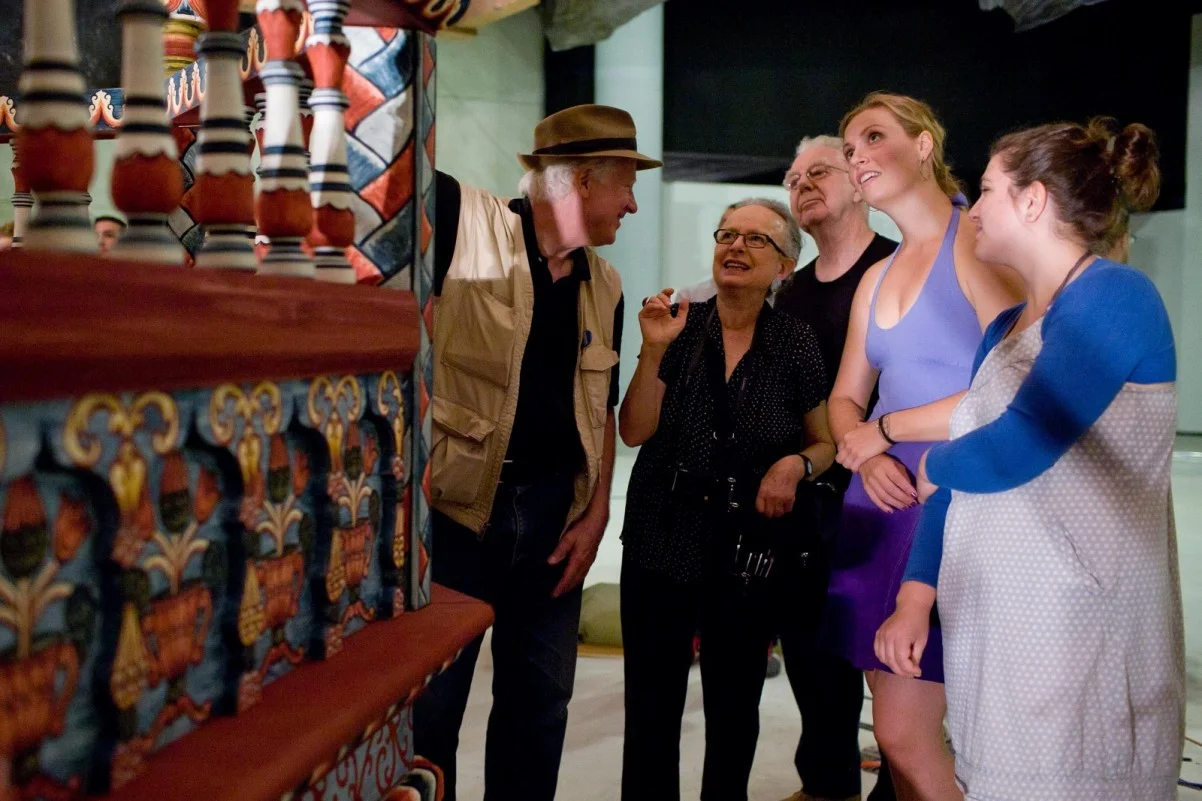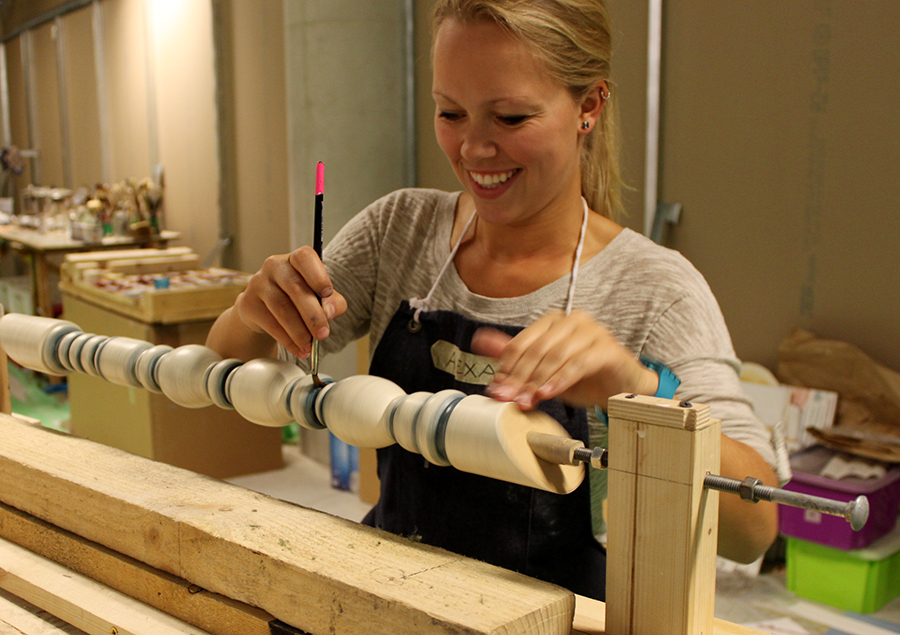Replicating the Gwozdziec Synagogue Bimah /
A bimah is a special platform which is usually elevated and located in the center of a synagogue. During services fragments of Torah and some prayers are read while standing on the bimah.
In June 2006…
Handshouse Studio created the Gwozdziec Bimah Project to research and build a full-size replica of the Gwozdziec Synagogue's bimah through educational work shops.
The original Gwozdziec Synagogue bimah was one of the oldest surviving documented bimahs in Europe until its destruction in 1918. The structure was carved and assembled between c. 1710 to 1725 in a regional style that combines late Baroque and Eastern European vernacular motifs. The bimah was brightly painted and located in the center of the painted prayer hall. It had an eight sided shape with open canopy that reflected the shape of the funneling and undulating tent-like structure of the interior ceiling of the synagogue. The bimah was a majestic raised platform flanked by two staircases and surrounded by elaborately paneled and spindled railings. Above the railings are mounted eight turned and carved columns that support an Italian Baroque style open canopy crowned by a bold four foot lantern with a spire reaching 16.5 feet. The eight sides are ten feet tall and are topped with eight ornately carved panels depicting lions, deer and floral patterns. The bimah is a elegant example of the synthesis of Polish wooden cultural heritage and Jewish liturgical art.
Breier Drawings of the bimah.
Like the original, the Gwozdziec Synagogue bimah replica is hand-made using traditional materials and processes of carving, turning, and joinery. University of Wisconsin Professor Thomas C. Hubka, author of Resplendent Synagogue, Professor Rick Brown from Massachusetts College of Art and architect Nat Crosby, worked with thirty volunteers of artist, crafts people, faculty and students to design the bimah referencing an extensive collection of architectural drawings and photographic documentation that survived in several Polish archives. Utilizing this documentation, the team replicating the bimah using panel carving, chip carving, carving in the round, wood turning, furniture joinery, steam bending, stenciling and finally painting.
Breier Color Drawing of bimah section.
In 2009…
the completed but unpainted Bimah replica was exhibited at Oberlin College with the ½ scale replica of the Gwozdziec Ceiling painting and the Zabludow model and door replica.
In 2013…
Handshouse Studio donated the Gwozdziec Synagogue bimah replica to the Core Exhibition of the Museum of the History of Polish Jews in Warsaw Poland. Then Handshouse and the Association of the Jewish Historical Institute organized a workshop to recreate the painted surfaces that covered the original bimah and then install it in the core exhibition. Referencing archival resources, students and volunteers worked with a team of artists to paint the full-scale bimah using the traditional painting techniques. The completed Gwozdziec Bimah now stands under the ornately decorated ceiling of the replica roof of the Gwozdziec synagogue, which was also recreated by students, volunteers and experts through Handshouse Studio workshops in 2011 and 2012.
Student Quote here
Original Gwozdziec Bimah
Bimah at Handshouse
Bimah in the MHPJ Museum
The Bimah workshops were made possible thanks to Handshouse Studio, which generously donated the wooden bimah to the Museum’s Core Exhibition, and philanthropist, Irene Pletka, for her ongoing support of the Gwozdziec Reconstruction Making/History project.
The World Premiere of Raise the Roof at the Atlanta Jewish Film Festival was an enormous success. Check here for upcoming screenings or here to arrange a screening.
Resources /
Making / History Gwozdziec Synagogue Project workshop groups and locations
A Brief History of Polish Wooden Synagogues
Gwozdziec Ceiling Painting Details
Gwozdziec Bimah Time Lapse of Construction
Brief History of Gwozdziec Synagogue and Archival Documentation
Handshouse Studio Wooden Synagogue Projects History and Timeline
Gwozdziec Bimah Presentation




















